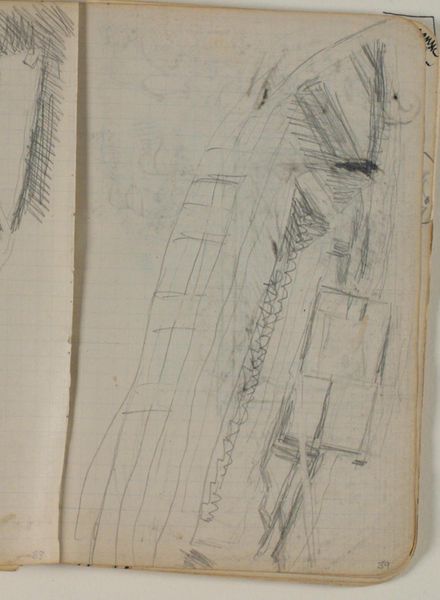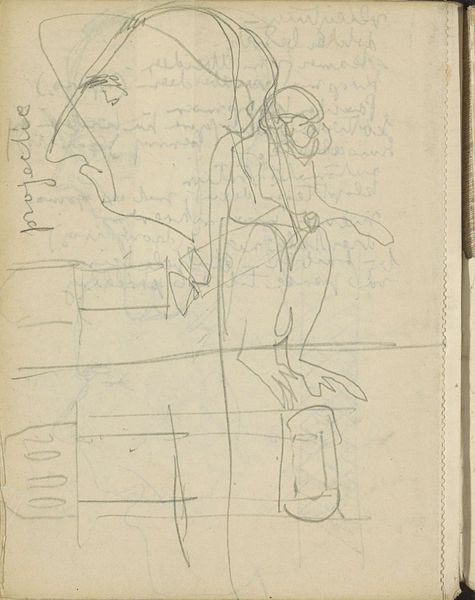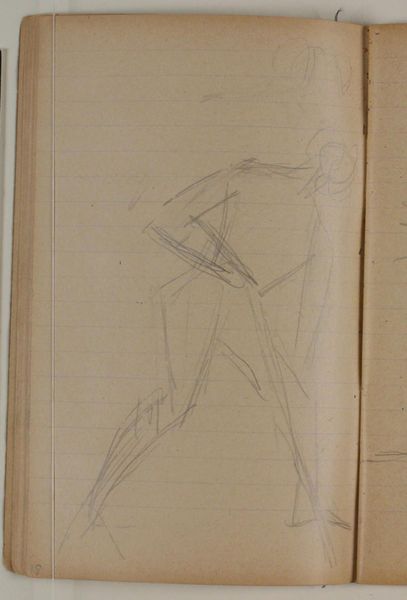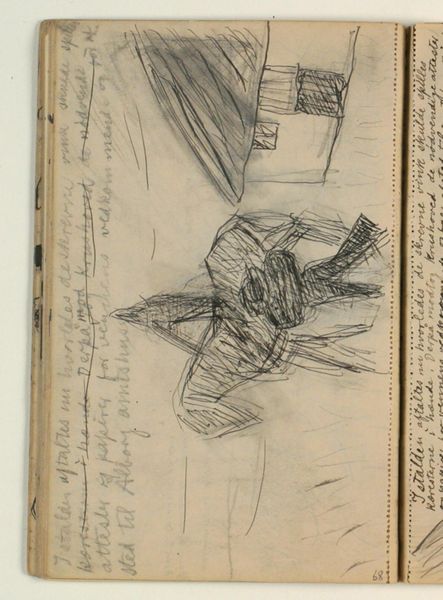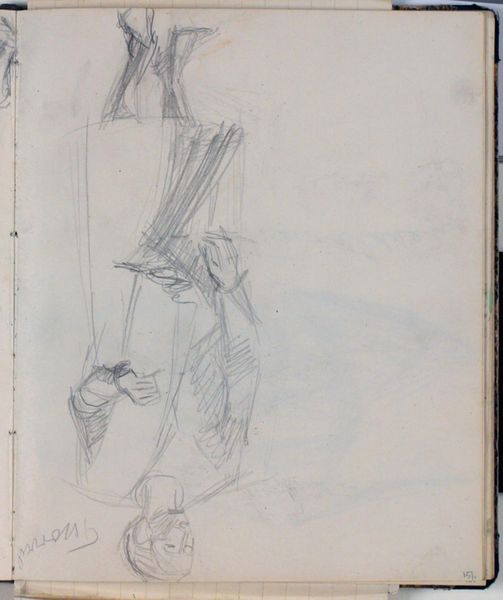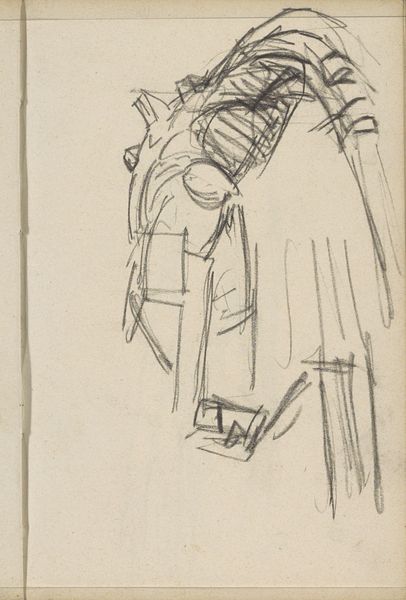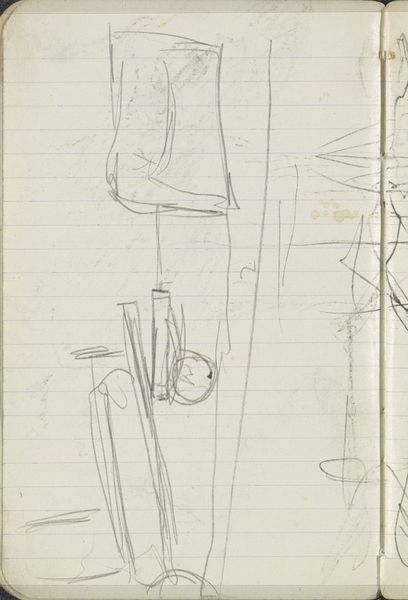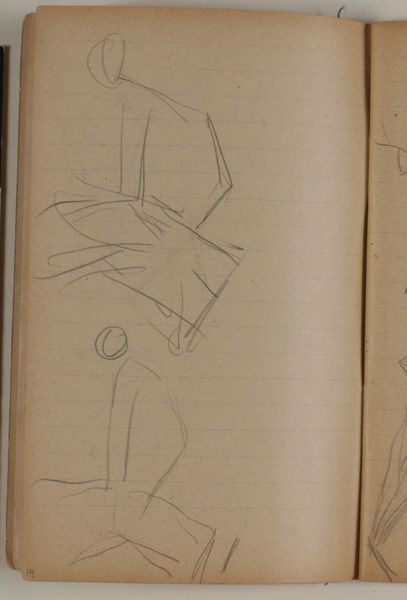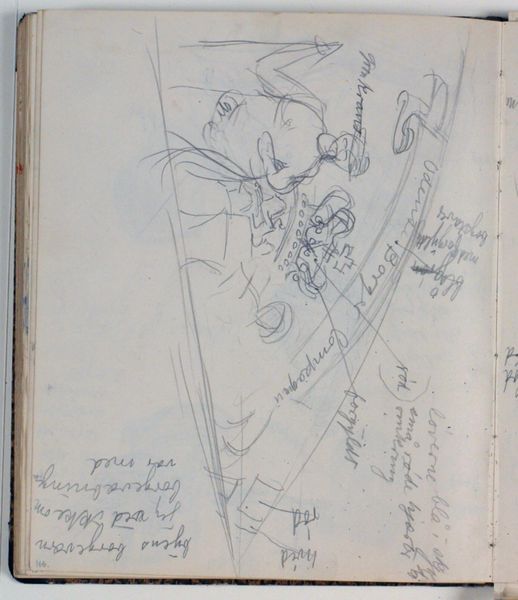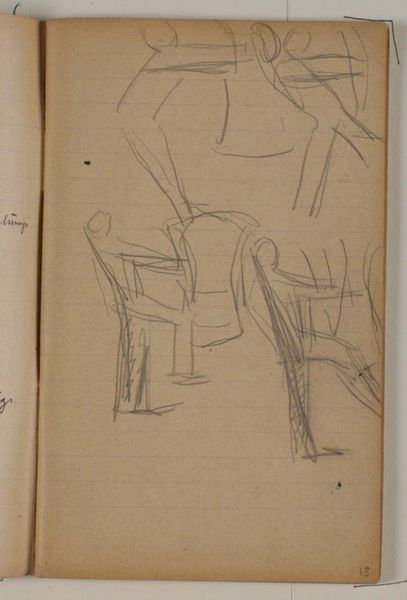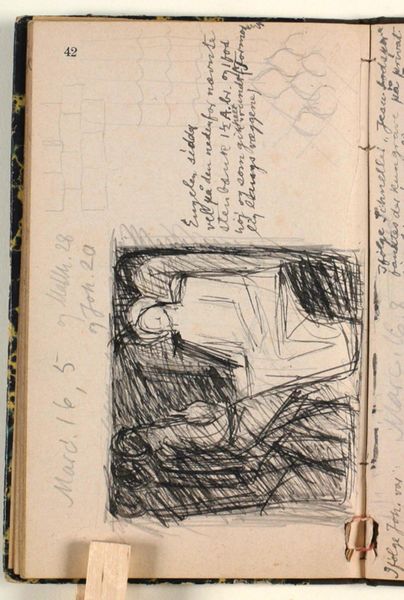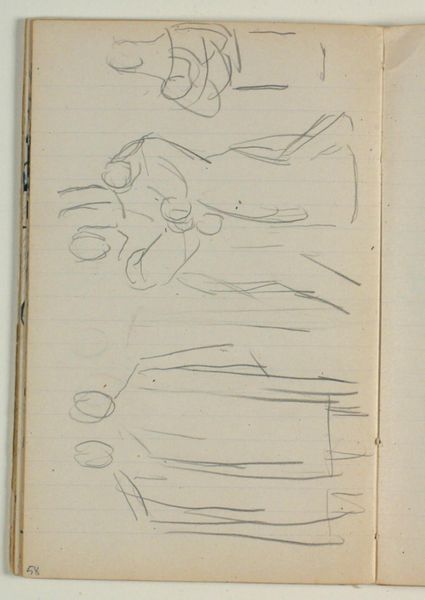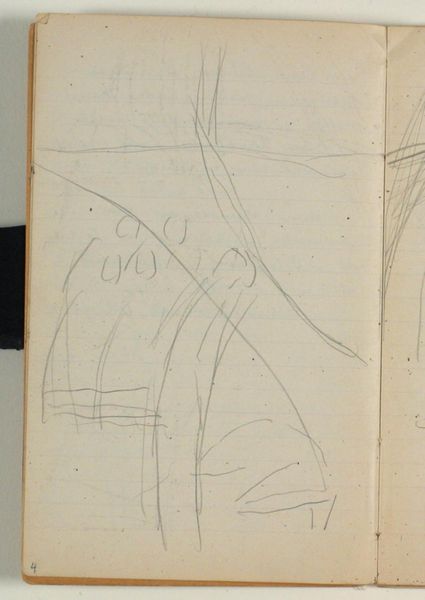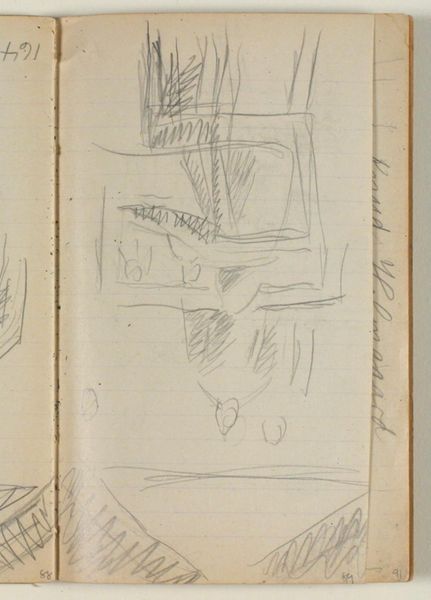
drawing
#
drawing
#
amateur sketch
#
toned paper
#
light pencil work
#
sketch book
#
incomplete sketchy
#
personal sketchbook
#
sketchbook drawing
#
watercolour illustration
#
sketchbook art
#
watercolor
Dimensions: 169 mm (height) x 109 mm (width) x 5 mm (depth) (monteringsmaal), 169 mm (height) x 109 mm (width) (bladmaal)
Curator: This is "Skitser (af jolle?) . Notater", or Sketches (of a yawl?) . Notes, by Niels Larsen Stevns, dating from around 1905 to 1907. Editor: It strikes me as incredibly raw. The quick pencil strokes on the toned paper – almost frantic. It has the immediacy of a fleeting idea being captured. Curator: Absolutely. What we see here is a page from what appears to be a personal sketchbook. Notice the visible page numbers and the hasty handwriting alongside the sketches. It suggests a functional, working document rather than a finished artwork. Editor: The material reality speaks volumes, doesn’t it? The sketch isn’t about the ideal form of the boat, or even about its artistic representation. It focuses more on understanding the physical object itself and how it fits into the larger, commercial fishing industry. Curator: Exactly. Given the period, consider the economic conditions impacting shipbuilding and fishing communities. A study like this may speak volumes of material necessity as it represents specific means of acquiring livelihood within such trade-based professions. Editor: But still, I keep coming back to these lines. The formal qualities—the pressure of the pencil, the varying weights of the strokes, all build an object which at first seem hard to recognize, that then becomes obvious: it's a part of a boat! Curator: The materiality here tells us it may have been an educational piece used within vocational trades and artisan schools to study naval construction. These visual annotations, produced efficiently at lower cost by the author themselves are of inestimable use in such workshops and school environments. Editor: It really makes you think about labor conditions in relation to artisan-led production versus mechanized shipbuilding during the period, which Stevns witnessed with industrial change happening quickly at that moment in time! Curator: Indeed. These kinds of works remind us to reflect critically on what and how something might be studied and replicated using cheaper means when more sophisticated technology cannot yet be achieved by tradespeople themselves. Editor: Seeing art outside of the final product helps expose and elevate production into visibility. Curator: In short, it illustrates a dialogue between the drawing and practical knowledge!
Comments
No comments
Be the first to comment and join the conversation on the ultimate creative platform.
